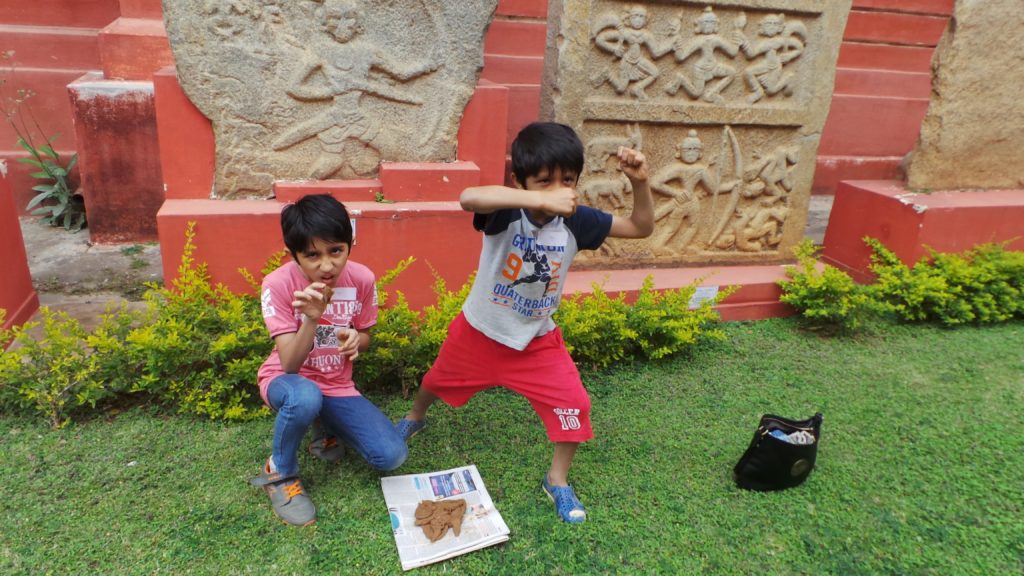Why are museums important and how can they be made interesting for kids
According to a research done by the Smithsonian Institution’s Early Learning Collaborative Network and Smithsonian Early Enrichment Center (SEEC) 2012, learning in museums highly aid in the understanding of the world around us. The research indicated that
1) Museums, with their real artifacts, dioramas, and immersive exhibitions provide a uniquely positive environment to foster learning by young children
2) Young children are interested in artifacts and exhibitions in traditional museums and can learn disciplinary specific information, such as history or biology, long before they encounter those disciplines in formal school settings
3) Young children approach artifacts and exhibits idiosyncratically based on their individual motives and interests; they learn by encountering real artifacts which they talk about with others, and about which they sometimes express their reactions in various verbal and artistic ways
4) Appropriate adult encouragement can enhance children’s learning and exploratory behaviors in museums
Audience engagement and learning in museums is an area that is relentlessly evolving. Many museums across the globe are constantly researching, developing and executing programmes to attract young children. Many museums and parents in India too are aware of these facts. However it’s always a challenge on how to make museums more engaging for children given the present state of museums. Below is a list of activities that are simple yet effective that museums and parents can do.
Museums in India can do
- Provide simple dress up options – It doesn’t need to be fancy, expensive or even realistic looking. This simple act of providing a suitcase of assorted daily life items to create DIY objects that relate to the collection provides an opportunity to be creative and relate with the past through the present.
- Provide unique craft materials – providing materials that help comprehend the period/civilization better enables a different dimension of understanding. Eg. different style looms that can be woven to better understand Persian carpets. Crafting is one way to bring history to life not just for kids but parents too.
- Workshops – on simple historical skills such as butter churning or embroidery on a piece of cloth acts like a time machine. If done thoughtful it can be a strong immersive experience.
- Recreating scenes – providing materials like soft dough or Lego pieces to create objects and scenes greatly enhancing creative skills and spatial learning. It help let ones imaginations run free.
- Provide a reporting station – People love to tell stories. Have a mike and simple camera placed in a strategic place in the gallery for people to record their stories. Themes could vary from a specific event or a general what was life like when…… This helps build a sense of ownership and opens door for further engagement with your visitors. This is also great content for using on social media channels.
What parents can do
- Taste food of different cultures – Good food can make a boring thing more tolerable. Preparing or tasting food unique to a culture is a great starting point to understanding different cultures.
- Watch a movie – History documentaries aren’t what they used to be. Many interesting facets are shown through documentaries. Documentaries combined with collection viewing leaves a longer impact on the child.
- Play Games – Games are an excellent way to engage children into accidental learning. Create your own game at the museum combining facts and details. This not only gets them excited but develops their observation skills. Games generates interest in the collection for both – adult as well children.
- Create a video – A definite hit, creating a video can be an immersive activity. Since the present generation are mobile and technology savvy creating a video immediately apples to them. The different themes could be
- things that you find uninteresting and why.
- things you find interesting and why
- weird and strange objects
- a story using funny and scary artifacts
- Create an autobiography of the object – Image yourself as the object and narrate your story. Be as creative or as factually you would like to be. Let you child do the same. This will give an opportunity to be logical and creative. Since it uses both the hemispheres of the brain it results in a more complete experience.
Do share your experience. We would love to hear from you.

 Tejshvi Jain is the founding director of ReReeti and an ATSA fellow. She is passionate about making heritage and culture more accessible. She had been an arts writer, teacher and curator prior to setting up this non-profit organization.
Tejshvi Jain is the founding director of ReReeti and an ATSA fellow. She is passionate about making heritage and culture more accessible. She had been an arts writer, teacher and curator prior to setting up this non-profit organization.










Recent Comments